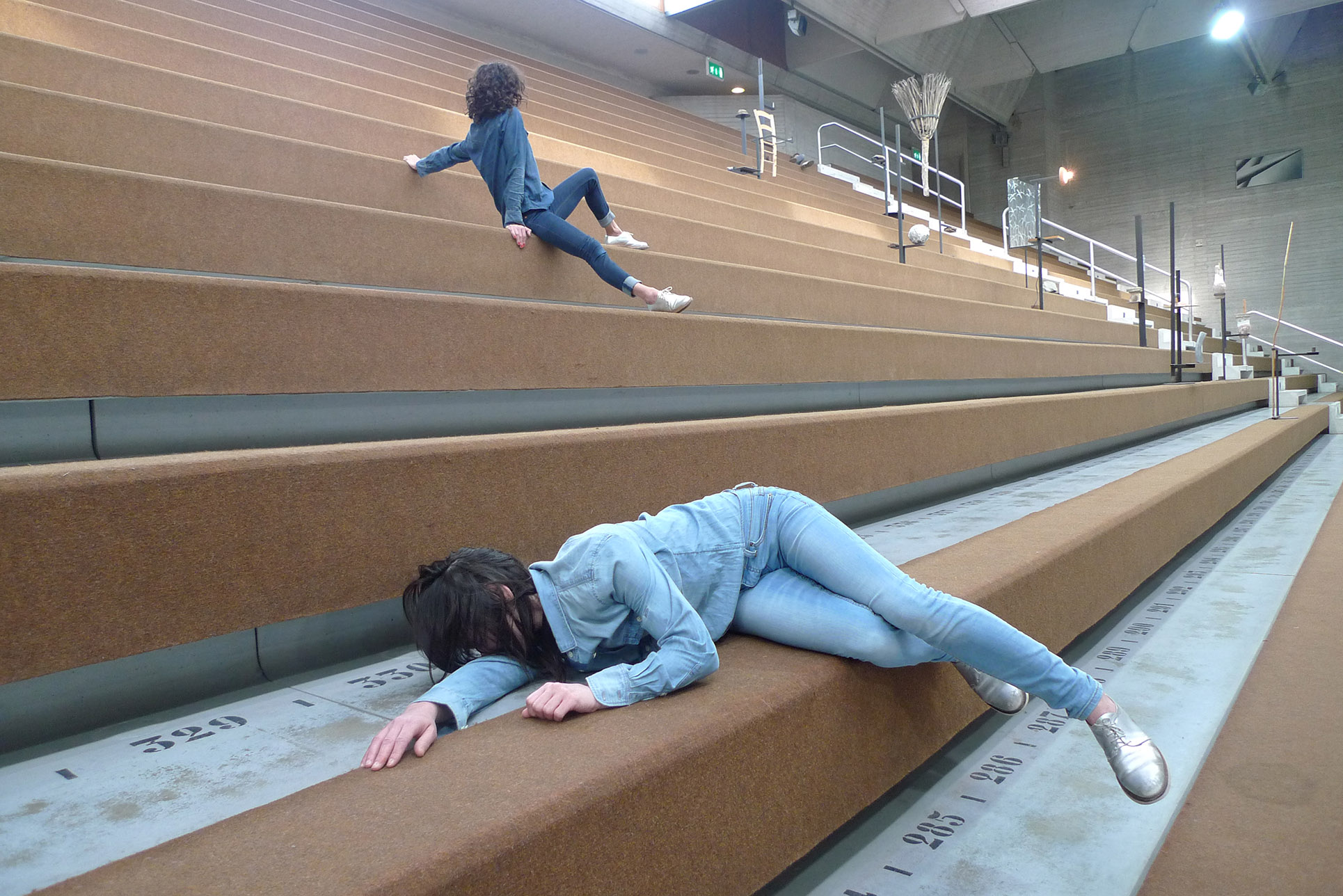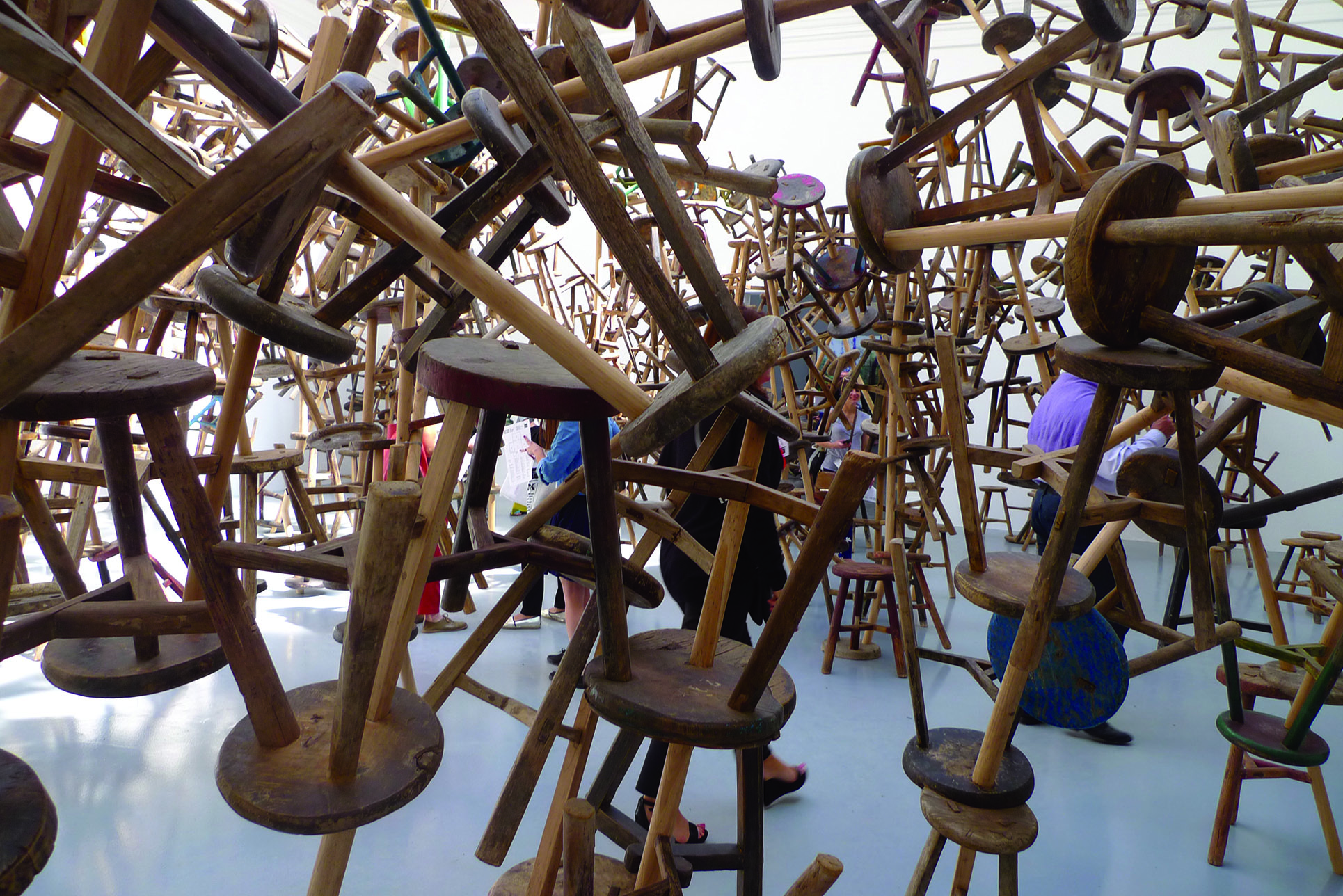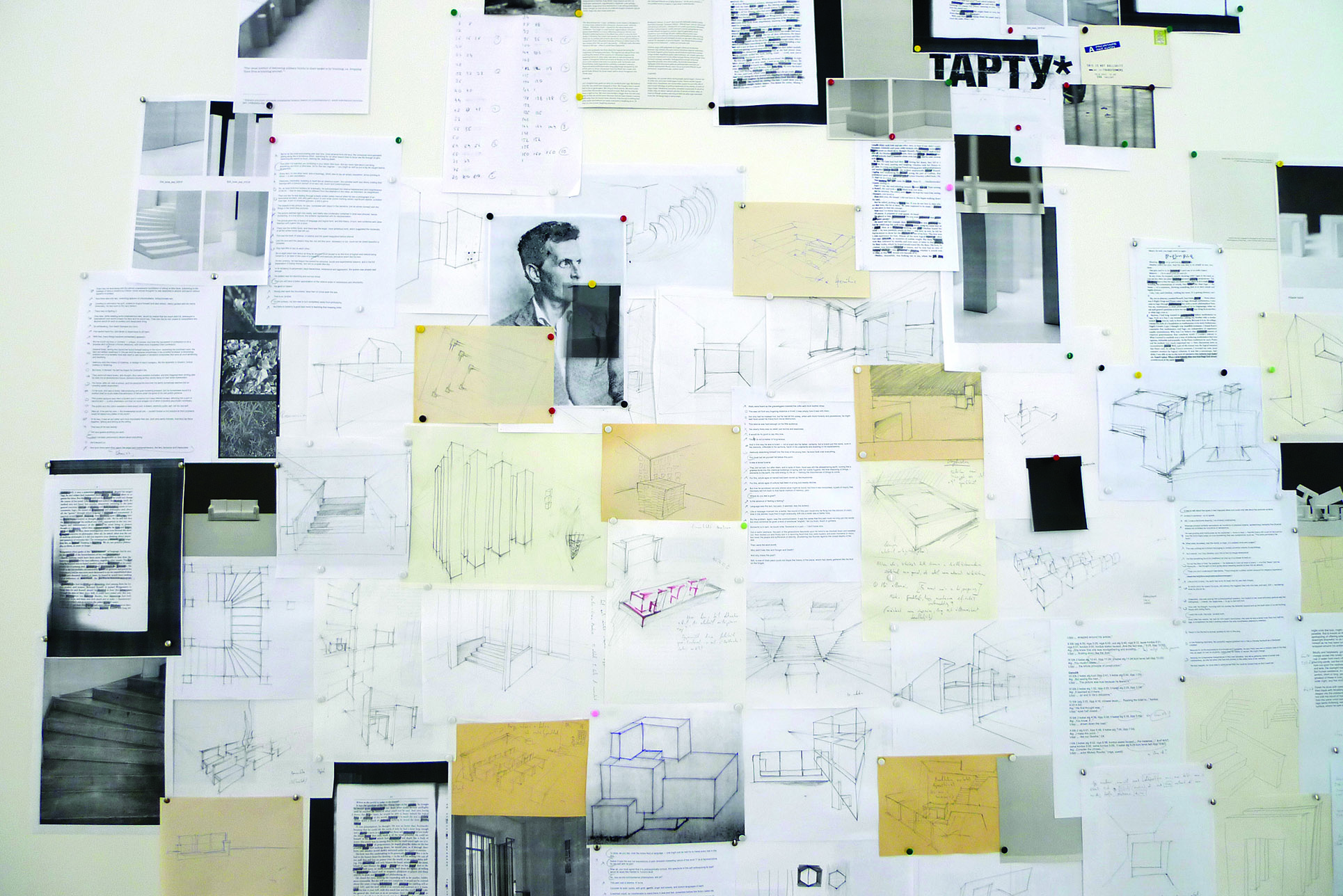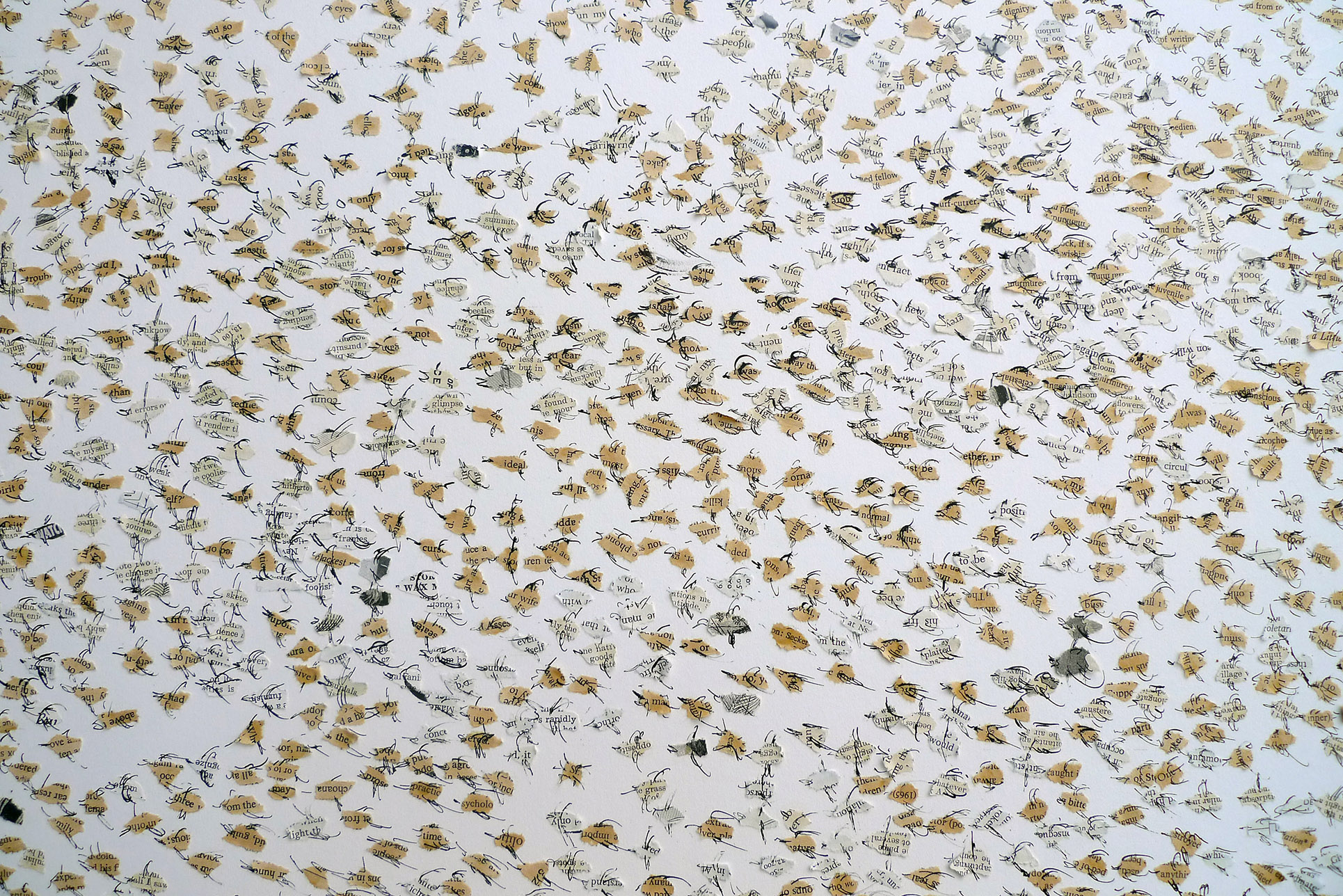Polyphonic Pavilions and a Search for the Self
A large proportion of the 88 national pavilions at the current 55th International Art Exhibition of the Venice Biennale reflect on the selfimage of the nation-state in this age of cultural complexity, migration mobility and global networks. There are countries exchanging pavilions, nations coming together under a single roof within a joint project, states inviting foreign artists or curators organising other countries’ exhibitions, and there are cases of artists representing the place where they live or where they’ve been educated.
The idea of exchanging pavilions is no great surprise to those following the events of recent Biennales. For example, we may recall Dora Garcia’s invitation to internationally renowned artists present in Venice at the time to contribute to her ‘platform’ entitled The Inadequate (Lo Inadeguado) in the Spanish pavilion (2011), or the Italian artist Giannia Motti, resident in Geneva, who represented Switzerland in 2007. Such occurrences not only indicate that the national idea is becoming ever more transparent, but also point to a tendency of redefining national identity as such and the possibilities of presenting it in the global arena. The motivation for these perceptible changes and the formal variations involved are individual, each case being special, but, as we will see, all of these examples demonstrate greater openness to the outside world, greater tolerance of difference and a growing interest in ‘that which I’m not’. The other, which reflects the self, helps to establish the boundaries of the self more precisely and in this way contributes to identity-building.
An exchange of pavilions – between France and Germany – was possible only after a decade of intensive discussion, and precisely 50 years after the signing of the Élysée Treaty which ended the conflict between the two countries and envisaged cooperation in the security, economic and cultural fields. Germany interprets “National Identity” as “a set of world influences and dependencies, instead of hermetic seclusion”, while France seeks to highlight “the kinship of the two peoples, reconciliation, and the universal hopes and values that unite us”. As a logical consequence, the two exhibitions include works by artists from other nations who have developed close ties with their country of residence. Germany is represented by the Chinese megastar Ai Weiwei, with his all-encompassing installation Bang, made from ordinary wooden stools which have been joined to form a collective spider’s web. The Iranian Romuald Karmakar offers videos with a powerful political message: one shows a German neo-Nazi rally, while in the other, the actor Manfred Zapatka declaims a speech by Salafi Imam Mohamed Fizazi in the Al-Quds Mosque in Hamburg. The South African Santu Mofokeng depicts in his photographs landscapes crippled by mining corporations, whereas Dayanita Singh presents video and photo material on the conflicts of tradition and everyday life in India.
Exhibited in the French pavilion is a work by the Albanian Anri Sala, who lives in Berlin but was educated in France. His installation utilises video as well as sound – both having special significance. Special acoustics have been created in the exhibition room, using professional materials to completely eliminate any echo. Two recordings of a contemporary performance of Ravel’s Concerto in G are played simultaneously. This is a work specially written by the composer for Paul Wittgenstein (brother of the philosopher Ludwig), who had lost his right arm in the First World War. From time to time there are minor time shifts in the recording. Anri Sala gives the visitor the chance to ‘swim’ in an unbelievably high-quality sea of sound, encouraging contemplation of the concepts of loss and gain, disability and virtuosity.
The collaboration between the two countries located at the opposite poles of contemporary Europe – Lithuania and Cyprus was born out of a fortunate coincidence, in spite of diplomatic negotiations. Both nations invited the ingenious Lithuanian curator Raimundas Malašauskas to take charge of their pavilions, moreover in an uncoordinated way, without knowing about each other’s plans, and he decided to create an exhibition as a happening for the two ‘clients’ in the immense Palasport sports hall behind the Arsenale. In the exhibition oOOo the details dissolve into the whole, and the whole splits up into detail: it is intended as an unbroken process in which the works by artists from Lithuania, Cyprus and many other International Places are displayed side by side, in an imposing architecturally modern concrete structure, somewhat reminiscent of those we know from the Soviet period. The central space is rhythmically subdivided by 46 partition walls, brought to the exhibition as readymades from various European museums: this is the work Cousins by the Dutch artist Gabriel Lester. The Cypriot Maria Hassabi fills the space with ‘living sculptures’: wearing silver shoes, they roll forward very slowly and whirl on the steps of the arena like lava flow. On the dark, exciting stairs of the building we encounter immense black and white photographs showing Soviet period gymnasts in training: it’s a work by the Lithuanian Algirdas Šeškus. The reinforced concrete scooter by the Cypriot Konstantinos Taliotis, hidden away in a corridor, reminds us of a mythical trip when the young architects Le Corbusier, Mies van der Rohe and Gropius, all employees of Behrens, made a trip together to Nicosia on a scooter.
The Estonian pavilion consists almost exclusively of foreigners: the Polish curator Adam Budak presents a precisely worked drama by the Hungarian artist Dénes Farkas, who is living in Estonia. The work Evident in Advance has been inspired by the writings of Ludwig Wittgenstein on language: Tractatus Logico-Philosophicus which emphasises the systematic nature of thought, and Philosophical Investigations in which, quite on the contrary, thinking is presented as the non-systematic processing of empirical material. The exhibition includes installations, immense photographs of architectural models in paper, a bookshop, recordings of readings and an installation with documents and sketches – all of which is devoted to the problem of the accessibility and the functions of language. “The world? A text?” – the catalogue quotes this pointed remark by Maurice Blanchot and also contains texts by two Italian philosophers: Adriana Cavarero from Verona University and Daniele Monticelli, Professor of Italian Studies and Semiotics at Tallinn University. The architectural structure of the Estonian pavilion has been created after a design by Markus Miessen in Berlin. This in itself is a kind of statement, if we remember the artist’s polemic theories directed against the contemporary ‘culture of participation’. We may mention his work The Nightmare of Participation.
The Palestinian pavilion, too, has an eloquent title: Otherwise occupied. Here we can marvel at models of buildings made of cardboard. In the garden of the Venice Academy of Fine Arts, the artist Bashir Makhoul invites the viewer to participate in the invasive occupation of a garden, where each visitor can place a cardboard box with windows cut into it. The pavilion of this non-existent country thus inevitably becomes a gesture of abusive occupation, demanding and defining for itself an identity that is still taking shape. In a video by Aissa Deebi, two actors in a somewhat Kafkesque atmosphere replicate the testimony by Daoud Turki at his trial in the Haifa court, where he was sentenced to seventeen years of imprisonment for spying. The Palestinian pavilion curated by Bruce W. Ferguson, a US citizen living in Cairo, seeks to go “beyond the claims of nationalism”, critically reflecting through artistic means on a Palestinian identity, seeking a different space in need of its own utopia.
Ensconced in a historic house behind the Giardini, the gardens of the Biennale, is the Maldivian pavilion which, if we discount the Minister of Culture and commissioner, consists a hundred percent of foreigners: there are 21 artists from 11 countries participating in the exhibition. The focus concentrates on the gaze that these foreign artists direct from the outside on these islands in the Indian Ocean. The artists include two Swiss and one Italian. Christoph Draeger, together with the Austrian Heidrund Holzfeind, presents the video Tsunami Architecture, focussing on the efforts to repair the damage from the disaster and the structures erected in four countries around the Indian Ocean, whereas the video Deep Weather by Ursula Biemann shows the inhabitants of Bangladesh engaged in dam-building work, undertaken in order to avert the continual flooding. The Italian Stefano Cagol presents the performance Ice Monolith which is fated to melt away inevitably, starting from the opening of the exhibition, and serves to highlight the problem of the melting of the polar ice caps, a danger to the Maldives and to Venice itself.
Australia is exhibiting an overwhelming installation by the Singapore- born artist Simry Gill, who now lives in Sydney and deals in her work with existential issues faced by migrants. She has deliberately left the roof open, because the pavilion will be destroyed and subsequently renewed after this edition of the Biennale, which means that her installations are subject to a slow process of entropy, washing away and collapse. The walls painted in China ink, and collages from words cut out from books and transformed into strange insects and ring-shaped objects – this collection, created over the years, is hung on the walls and forms cycles of an eternal dance, rather than nullity. It is certainly not by accident that on the floor there are piles of books from which the cuttings hung on the walls derive, books with titles such as Australian Nationalism rather than Where I Was From, testifying to the immigrant artist’s reflection on identity.
The Cuban exhibition is being held at the Museum of Archaeology in the Piazza San Marco. Seven Cuban artists engage in a conversation with seven foreign artists. In the Pythagorean exhibition by Glenda Leon, every star acquires a sound, filling the Universe with sound like a little music box, while the Cuban artist Maria Magdalena Campos-Pons and the US artist Neil Leonard create scenes from everyday Cuban life on small video screens contained in birdcages, present in countless numbers in this space filled with antique sculptures.
In the premises of the Fondazione Bevilacqua La Masa, Norway has entrusted the creation of an exhibition devoted to the 150th birthday of Munch to Angela Vettese, critic and adviser for Culture and Tourism at Venice City Council, who confronts the paintings and drawings of this precursor of German Expressionism with the film Dirty Young Loose by the Norwegian Lene Berg.
Latvia, too, has invited two curators from abroad, namely the Americans Anne Barlow and Courtenay Finn from Art in General, New York, who collaborate with Alise Tīfentāle of the kim? Contemporary Art Centre. In contrast to the other Baltic states, this team of curators has chosen to use the country’s own resources, presenting two Latvian artists who acquaint the international audience with the life and customs in a snowy Latvian countryside.
The Kenyan pavilion is pervaded by the presence of Chinese artists, which seems to be explicable in terms of this country’s poverty, necessitating a request for support from mighty China. In the Brazilian pavilion, the dialogue with foreign artists is based on a confrontation between the contemporary Brazilian position of Helio Fervenza and Odires Mlàszho, and the historical “trilogy of fundamental works” by Bruno Munari, Lygia Clark and Max Bill.
As we have seen, there are various reasons for a different presentation of the national component: a peace treaty or a cooperation agreement, a fortunate coincidence, a view from the outside, a rich sponsor, as well as paradigmatic works and openness to the difference. Such a development should come as no surprise: the Biennale came into existence 118 years ago on the model of 19th century international exhibitions which, in turn, is based on strong rivalry between countries as expressed in the competition of pavilion architecture. In the contemporary world, crisscrossed by multicultural networks and migration flows, attention has turned from form to content, from the exterior to thought, from the object to the continuity of the process. The construction of the identities of different countries and cultures logically follows the course of social development in these countries, influenced by their history and by flows of migration where an exchange of information and images is continually occurring, now that we’ve reached a stage where multilingualism has become almost the standard situation not only in global cities, but also inside the individual subject on itself. The depiction of a single culture as monochrome has always included some kind of idealisation, but more than ever before, it lacks an empirical basis. At the Venice Biennale, the national pavilions still have written the name of the country on the façade, as well as the carefully thought-out architecture which was intended to convey the ideas of the representatives of that state one time, but inside we can now perceive strivings to express, describe and depict what the countries have become today: they have grown polysemous, nuanced and elusive, and have relinquished claims to unanimity. The functions of the pavilions have thus changed: they have come to represent a stage for intercultural dialogue, for searches of identity and for changing perspectives, in continual redefinition.
Barbara Fässler
Translator into English: Valdis Bērziņš



